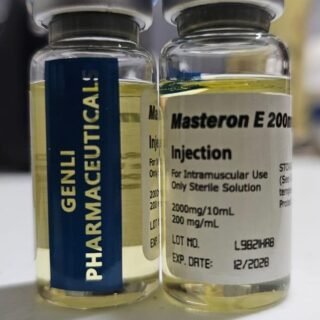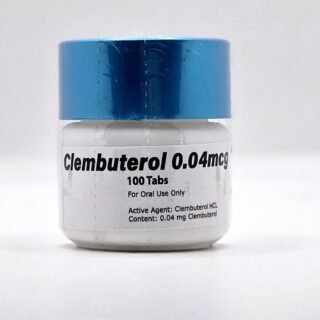Category
- Best Peptides for muscle growth
- Geno Pharma Domestic Warehouse 2 (Canada&USA)
- GP(Domestic Shipping US) Warehouse 1
- Human Pharma Premium
- Phar Labs Premium-Select
- Steroids on Sale USA, Real Steroids Online
- New arrivals in USA
- Most popular steroids in USA
- Antiestrogens / Gonadotropins
- Bangkok Steroid USA
- Biopharma Steroid USA
- British Dragon
- Anabolic Steroids for Horses
- Fat-burners
- Gen Pharma USA
- Medical Pharma Steroid USA
- Medical Tech Steroid USA
- Novocrine Steroids
- HGH USA
- Omega Labs Steroid USA
- Rotterdam Steroids USA
- SARMs USA
- Sciroxx
- Sydgroup Steroid USA
- Big vetenary Steroid USA
- Watson Steroids
- XT Labs Steroids
Most Popular steroids USA
-
 Saizen 8.8 mg (Somatropin) 26.4 UI Domestic USA
Saizen 8.8 mg (Somatropin) 26.4 UI Domestic USA
$115.00Original price was: $115.00.$98.00Current price is: $98.00. -
 PARAMIX 300 Genli Pharma – Trenbolone A, E & Hexa Mix 10 ml
PARAMIX 300 Genli Pharma – Trenbolone A, E & Hexa Mix 10 ml
$110.00Original price was: $110.00.$99.00Current price is: $99.00. -
 Testosterone 400 Biopharma 10 Ampoules
Testosterone 400 Biopharma 10 Ampoules
$99.00Original price was: $99.00.$75.00Current price is: $75.00. -
 Testosterone Cypionate 200 Biopharma 10 amp
Testosterone Cypionate 200 Biopharma 10 amp
$99.00Original price was: $99.00.$72.00Current price is: $72.00. -
 Drostanolone Enanthate 200mg 10 ml - Masteron Enanthate
Drostanolone Enanthate 200mg 10 ml - Masteron Enanthate
$110.00Original price was: $110.00.$90.00Current price is: $90.00. -
 Primobolan Pills 25mg 100 pills Domestic USA
Primobolan Pills 25mg 100 pills Domestic USA
$99.00Original price was: $99.00.$85.00Current price is: $85.00. -
 Clenbuterol for Sale 40mcg 100 Tabs - GP Premium Domestic USA
Clenbuterol for Sale 40mcg 100 Tabs - GP Premium Domestic USA
$99.00Original price was: $99.00.$65.00Current price is: $65.00.


Table of Contents
ToggleIs Testosterone converted into Estrogen?
Yes it is true and it is a very complex process we will explain with details everything since the beginning,
Explaining why the aromatization process is common in the world of bodybuilding takes us back to talking about testosterone. Testosterone is the primary substrate used in the male body for the synthesis of estrogen (estradiol). Main female sex hormone. Although the presence of estrogen may seem somewhat unusual in men, it is structurally very similar to testosterone.
With a little alteration by the aromatase enzyme, estrogen is produced in the male body. Aromatase activity occurs in one or several regions of the male body. Including adipose, liver, gonadal, central nervous system, and skeletal muscle tissues.
In the context of the average healthy man. The amount of estrogen produced is generally not significant for the body’s disposition, and may even be beneficial in terms of cholesterol values. But, in larger amounts, it has the potential to cause many unwanted effects.
Including: water retention, development of female breast tissue (gynecomastia), and accumulation of body fat. For this reason, many focus on minimizing estrogen activity in the body with aromatase inhibitors like Armidex and Cytadren, or anti-estrogens like Clomid or Nolvadex. Especially when gynecomastia is a concern or muscle definition is being sought.
Estrogen Benefits
We should not get carried away and think that estrogen has no benefit. It is actually a desirable hormone in many instances. Athletes have known for years that estrogenic steroids are the best mass builders. But just a few years ago it has been understood under what mechanisms it works.
Apparently, with this hormone, the reasons go beyond the simple increase in size, weight, and strength that one would attribute to estrogen-related water retention. Really having a direct effect on the anabolism process.
This is manifested by increases in glucose utilization, growth hormone secretion, and proliferation of androgen receptors. And that is one of the main answers of Why aromatization process is common in bodybuilding.
Glucose and Estrogen Use
Estrogen can be very important in promoting an anabolic state; by affecting glucose utilization in muscle tissues. This occurs through altered levels of glucose 6-phosphate dehydrogenase; an enzyme directly related to the use of glucose for the growth and recovery of muscle tissue.
Specifically, G6PD is a vital part of the penthose phosphate process. It is integral in determining the rate at which nucleic acids and lipids are to be synthesized in cells to repair tissue.
During the regeneration period following skeletal muscle damage, G6PD levels show a dramatic increase. Which is believed to represent a mechanism for the body to increase recovery when needed. But, we found that estrogen is directly related to the level of G6PD that will be made available to cells in this window or recovery period.
The Relationship between Estrogen and G6PD
It was established in a study that showed that glucose 6-phosphate dehydrogenase levels increase after administration of testosterone propionate. But, the aromatization of testosterone to estradiol is responsible for this increase, and not the androgenic action itself.
Non-aromatizing steroids (dihydrotestosterone and fluoxymesterone) were tested in conjunction with testosterone, but failed to duplicate the effect of this hormone. Furthermore, the positive effect of testosterone propionate was blocked when the aromatase inhibitor 4-hydroxyandrostenedione was added.
While the exclusive administration of 17-beta estradiol caused a similar increase in G6PD, that produced with testosterone propionate. The inactive estrogen isomer 17-alpha estradiol that is unable to bind to an estrogen receptor; also failed and failed to do anything.
They used testosterone propionate and the anti-androgen flutamide. These tests showed that this drug also did nothing to block the positive action of testosterone. Making it clear that this is an independent effect of the androgen receptor.
Estrogen and Growth Hormone GH/IGF-1
Estrogen can also play an important part in the production of growth hormone and IGF-1. IGF-1 (insulin-like growth factor). It is an anabolic hormone released in the liver and various peripheral tissues through growth hormone stimulation. IGF-1 is responsible for the anabolic activity of growth hormone. As increased nitrogen retention and protein synthesis and cell hyperplasia (proliferation).
One of the first studies in this regard dealt with the effects of the anti-estrogen tamoxifen on IGF-1 levels, showing that it had a suppressive effect. A second study, from 1993, looked at the effects of testosterone-only replacement therapy on GH and IGF-1 levels. I compared them to the effects of testosterone combined with tamoxifen.
When tamoxifen was given, GH and IGF-1 levels were markedly suppressed. While both values were elevated with the administration of testosterone enanthate. Another study has shown that 300 Mg. of weekly testosterone enanthate cause a small increase in IGF-1 in normal men.
Here the 300 Mg. of the testosterone ester caused an elevation of estradiol levels. Which was to be expected at such a dose. This was compared to the effect of the same dose of Nandrolone Decanoate. However, this steroid failed to produce the same increase. This result is interesting, especially when we noticed that estrogen levels actually went down when he was taking this steroid.
Another showed that GH and IGF-1 secretion is increased by testosterone administration in men with delayed puberty, while dihydrotestosterone (non-aromatizable) appears to suppress GH and IGF-1 secretion.
Estrogen and the Androgen Receptor
Estrogen has also been shown to increase the concentration of androgen receptors in certain tissues. This was demonstrated in rat studies, which examined the effects of estrogen on androgen receptors at the cellular level in animals that received an “orchiectomy” (removal of the testicles, often done to decrease endogenous androgen production). According to the study.
Estrogen administration resulted in a staggering 480% increase in methyltrienolone (a potent oral androgen often used as a reference for receptor binding activity in studies) binding in levator ani muscle. The suggested explanation is that estrogen must be either directly stimulating androgen receptor production, or perhaps slowing down the rate of breakdown of the receptors.
Although the growth of the “levator ani” muscle of the animal is commonly used as a reference for the anabolic activity of steroid compounds, it is admittedly a muscle of the sexual organ, and different from skeletal muscle tissue. This type of muscle has a much higher concentration of androgen receptors. This study also determined the effect of estrogen on “fast-twich” muscle tissues (fast muscle fibers).
Specifically the tibialis anterior and the extensor digitorum longus. But the same result as the “levator ani” was not observed. Although it is daunting at first glance. The fact that estrogen can increase the binding of androgen receptors in any tissue; it stands as an extremely significant discovery. Especially with regards to the fact that we now know that androgens have some positive effect outside of muscle tissues.
Anti-Estrogen and Athlete
So what does this mean for the bodybuilder who wants to achieve optimal size? There is a clear need to use anti-estrogens due to the appearance of estrogenic side effects. They should then be used, or the drugs administered should be replaced by non-estrogenic compounds.
Gynecomastia is certainly an unwanted problem for the steroid user, as are noticeable gains in fat mass. But if these problems have not been present, the added estrogen due to a cycle of testosterone or Dianabol for example, could in fact be helping in the formation of muscle mass.
An individual who is unsuspecting, or who is not predisposed to these side effects, may therefore want to avoid or postpone the use of estrogen maintenance drugs. In order to achieve the maximum muscle tissue gains possible.
SERMS
Tamoxifen, Raloxifen, are some of the serms that block the strogen receptors, but with the side effects in the IGF1, you can use them to control the estrogen in some of the receptors.
Anti-Estrogen
Arimidex functions by blocking the aromatase enzyme, which is in turn responsible for the production of estrogen. By inhibiting the aromatase process, Arimidex will lower the body’s serum estrogen levels; in fact, a total suppression of estrogen by 80% has been well noted with this compound.
Share this page:
- Click to share on X (Opens in new window) X
- Click to share on Facebook (Opens in new window) Facebook
- Click to email a link to a friend (Opens in new window) Email
- Click to share on LinkedIn (Opens in new window) LinkedIn
- Click to share on Reddit (Opens in new window) Reddit
- Click to share on Pinterest (Opens in new window) Pinterest
- Click to share on Telegram (Opens in new window) Telegram
- Click to share on WhatsApp (Opens in new window) WhatsApp
- Click to share on Tumblr (Opens in new window) Tumblr
Written by Steroids USA
Pay with WISE APP or Remitly
Pay with WISE App or Remitly
Fast money transfers from USA for fast delivery of steroids
Secure delivery in USA
100% reliable shipping in USA
24x7 Support
Online 24 hours
Low cost delivery
Great shipping prices in USA
BULK ORDER DISCOUNT
If you are a reseller in the USA you can get a special DISCOUNT, we can give you up to 50% or more on bulk orders. If you want to make a bulk order, we can negociate for orders of over USD$4,000, contact us by email.
Steroids info










